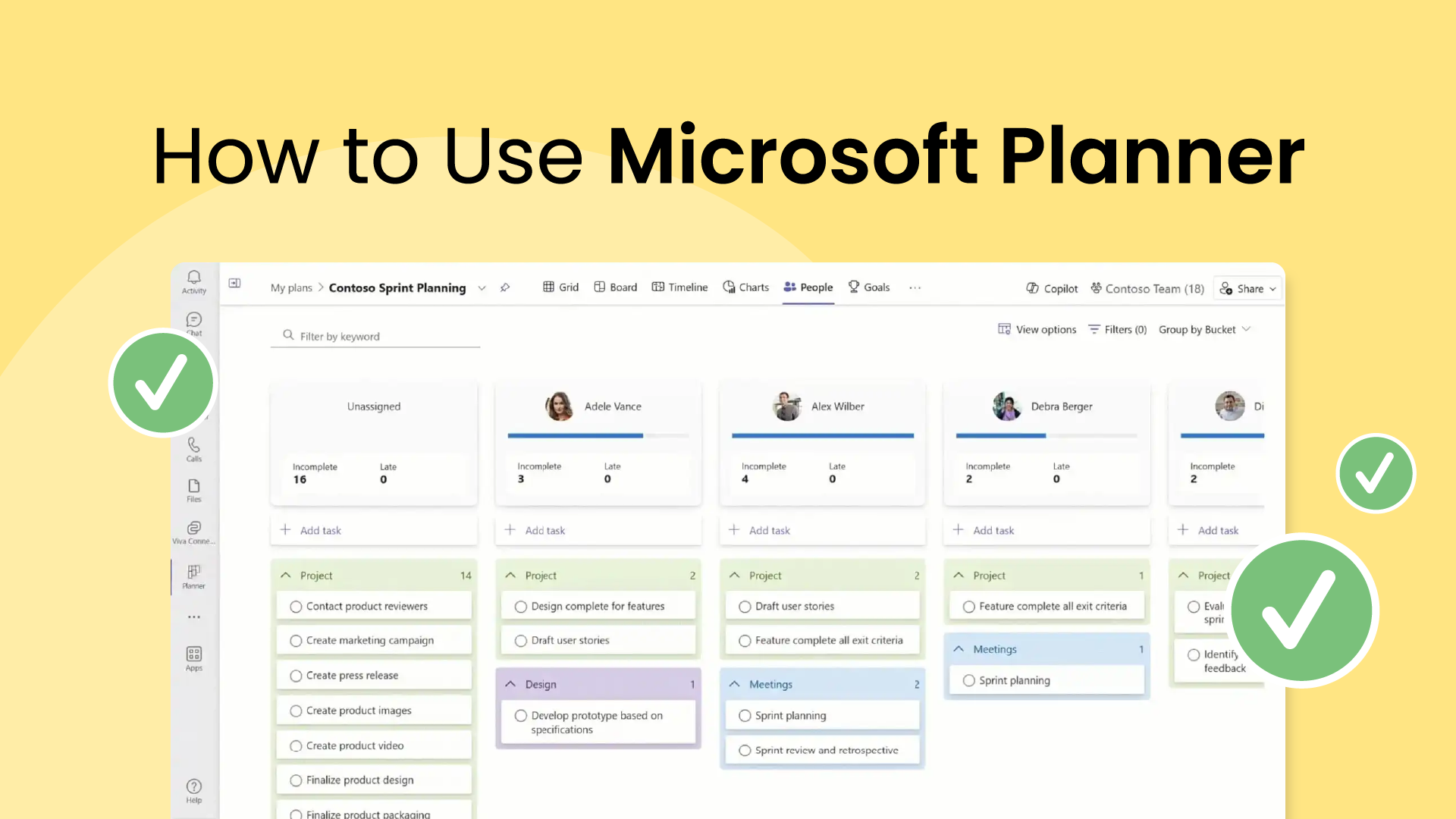Meetings have a bad reputation – sometimes for good reason. But standup meetings are different. They're the meetings you might actually look forward to – short, sweet, and surprisingly productive.
In this article, we'll take a look at standup meetings, exploring what they are, why they're important, and how to run them effectively.
What’s a stand-up meeting?
A stand-up meeting, or standup meeting, is a brief daily huddle where team members share progress updates, discuss roadblocks, and align on priorities. These meetings often last no more than 15 minutes and may even take place with all attendees standing to encourage brevity and focus. Also known as daily scrum meetings, standup meetings a staple of agile software development and are increasingly popular across various industries. Done right, standup meetings are a powerful part of the scrum process designed to boost transparency, collaboration, and productivity.
The goal is to get everyone on a team aligned on the status of the project, what's being worked on, and uncover any potential roadblocks that might hinder progress, without taking up too much of everyone's time. The name "stand-up" comes from the idea that participants often literally (or figuratively) stand during these meetings, keeping them short and to the point.
During a typical standup, each team member briefly answers three standard questions:
- What did you accomplish yesterday? (Summarize completed tasks)
- What will you work on today? (Outline your focus for the current day)
- Are there any obstacles in your way? (Identify any problems you need help resolving)
Let’s take a look at what makes a great standup meeting, common pitfalls to avoid, and how to get the most value out of this daily ritual.
Why standup meetings matter
The origins of standup meetings date back to the early days of software development when Agile methodologies emerged as a response to the rigid waterfall approach. The idea behind standups was to create a more flexible and adaptive workflow, allowing developers to quickly identify and resolve issues while keeping everyone aligned on project status. Today, it isn’t only the development team who leverage standup meetings, they’ve expanded beyond tech circles across all kinds of industries, including marketing, sales, operations, and even healthcare.
Standup meetings pack a punch despite being short. Why? Because they boost team strength and improve project results. Plus, they promote good teamwork and productive outcomes. Here's a closer look at why they matter:
1. Transparency & alignment
Standups offer a regular snapshot of where your project stands. Everyone gets a clear understanding of who's doing what, what's going smoothly, and what potential delays might be lurking around the corner. This shared awareness keeps your team on the same page and working towards common goals.
2. Problem solving & collaboration
Stuck on a task? Standup meetings are your quick-response troubleshooting zone. By highlighting blockers early, you can tap into the collective knowledge of your team to find solutions, get help from the right people, and prevent minor issues from turning into major stalls.
3. Accountability & motivation
Knowing you'll share your progress with the team each day creates a subtle sense of accountability that keeps everyone moving forward. It's also a chance to recognize hard work and celebrate wins, boosting morale and fostering a sense of shared achievement.
4. Continuous improvement
Consistently reviewing workflow and roadblocks in standups reveals recurring bottlenecks or inefficiencies. This allows agile teams to address pain points and continuously refine their processes, making everyone more productive in the long run.
Best practices for effective standup meetings
While the concept of a daily stand-up meeting is simple, it takes some discipline to maximize its effectiveness. Here are the core principles to keep in mind:
Before the meeting
- Establish a regular rhythm: Choose a consistent daily time (often first thing in the morning) and, if working in-person, a central location (for remote teams, a consistent Zoom link works too). Stick to the schedule diligently. Still, this can sometimes be easier said than done. Tools like Reclaim.ai can take the pain out of scheduling with its Smart Meetings feature to automatically find the best time for your standups every day, considering everyone's availability and preferences.
- Time it right: Standups should be strictly time-boxed to 15 minutes or less. Emphasize brevity. Think about it: no one wants to "stand" around for much longer than this.
- Visual aids: Have a physical or digital board (Kanban, Scrum, etc.) visualizing project tasks where everyone can see them. This provides focus.
- Appoint a facilitator: Designate a team member to keep the daily stand-up meeting on track. This doesn't necessarily need to be the project manager either. The facilitator role can rotate if desired or be assigned to a designated scrum master.
During the meeting
- The "Three Questions": Stick to the standard questions (or some similar variation):
- What did I accomplish yesterday?
- What will I work on today?
- Are there any obstacles in my way?
- Stand up: If you're working in person, the simple act of standing up encourages brevity and focus.
- Stay on topic: The facilitators or scrum masters should gently redirect off-topic discussions or problem-solving. Suggest taking these offline for a separate conversation.
- Rotate the order: Avoid having the same person speak first every day. This keeps everyone engaged.
- Notes are optional: Some teams take brief notes, but the focus should be on verbal communication, not documentation.
After the meeting
- Action on blockers: If obstacles are identified, the team (or facilitator) should make sure someone is assigned to help resolve them quickly.
- Iterate & improve: Seek feedback from your team. Are standups helpful? What could make them better? Adjust your format as needed.
Getting the most out of your standups
Standup meetings offer great potential, but like any tool, you'll get the most benefit by using them strategically. Here are a few ways to level up your standups:
- Leverage smart scheduling: While most standups occur first thing during the work day, participants may have different schedules. Not to mention, some people may participate in several standups with different teams, and there’s a good chance you’re working across a couple different time zones. So consistently finding the best times for these recurring meetings can be challenging, but you can use AI automation scheduling like Smart Meetings to make sure your standups are always scheduled during mutual free time for everyone on your team.
- Parking Lot: Sometimes a quick issue surfaces that still needs more discussion, but not right now. Designate a "parking lot" (a physical whiteboard space, a shared document) to note these items for follow-up later. This keeps the standup on track.
- Action items: You always want your standups to lead to tangible action. If a problem blocks multiple people, assign an owner to follow up and report back the next day. Note any specific tasks or next steps that arise from the meeting.
- Keep it light: A little humor or a quick check-in on how other team members are feeling can build rapport while sticking to the agenda.
- Celebrating wins: Take a minute to celebrate achievements from the previous day, no matter how small. This boosts morale and reinforces the value of everyone's contributions.
- Retrospectives on the meeting itself: Periodically, ask your team for feedback on the standup process. Are they getting value? Is the time right? Does the format need tweaking? This continuous improvement mindset keeps your standups effective and prevents them from feeling stale.
Running standups for remote teams
Remote team members can reap the same benefits from standups as co-located teams, but they require a few adjustments:
- The right tools: Invest in a reliable video conferencing or meeting software tool for face-to-face interactions. Also, consider tools built specifically for asynchronous standups (e.g., Slack, Range). These allow for written updates at times convenient for each team member.
- Structure is key: Even more so than with in-person teams, remote standups need clear guidelines and facilitation. Stick to the "Three Questions" format to prevent rambling.
- Beat isolation: With remote or distributed teams, it's okay to encourage a bit of informal chat at the start or end of the meeting to boost the social connection often missing in remote work.
- Time zones: If your team spans multiple time zones, consider asynchronous standups as the primary method, perhaps with a shorter synchronous meeting for high-urgency blockers.
- Documentation: Consider a shared document for written standup summaries, allowing greater visibility and reference compared to solely verbal updates.
Remember the core purpose of standups – alignment, communication, and identifying obstacles – remains the same for remote teams. Adapt the format to provide the same benefit from a distributed environment.
Avoiding the common standup pitfalls
Even the best intentions can lead to standup meetings that drag or lose their focus. Be aware of these common traps and learn how to steer clear:
- Turning into status reports: It's tempting to give a laundry list of every task completed. Instead, focus on highlights that impact the team and roadblocks needing resolution. The facilitator can help steer people back toward the key questions to keep things concise.
- Problem-solving on the spot: Standups are perfect for surfacing problems, but not necessarily for deep-dive troubleshooting. When a complex issue comes up (which will inevitably happen from time to time), note it for a separate discussion after the standup, involving only the relevant people.
- Rambling & distractions: It's easy to get sidetracked by minor details or yesterday's office drama. Encourage team members to keep their updates concise and relevant to the project's progress. A gentle time reminder from the facilitator can be helpful.
- Lack of participation: Sometimes a few team members dominate the conversation while others stay quiet. The facilitator can directly bring quieter members into the discussion so everyone's voice is heard and potential blockers are identified.
- Losing sight of the purpose: If your standups become routine and feel pointless, it's time to reset. Remind the team why these meetings matter. Consider changing up the format – using a visual board or a brief variation on the standard questions can reignite participation.
From stand-up to success 🕺🏽
Standup meetings can be a game-changer, but they can also fall flat if not managed well. Stick to the essentials – yesterday's progress, today's plan, and any blockers that need attention. Encourage open communication and quick resolutions. Don't get bogged down in lengthy discussions; schedule follow-up meetings as needed. Done right, standups will leave your entire team feeling informed, energized, and ready to tackle the day's challenges.



































